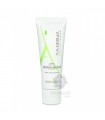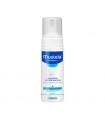ACTION AND DESCRIPTION
The pacifier mimics the shape of the nipple during the suction process and adapts perfectly to the baby's mouth. Prevents saliva buildup, while facilitating the adoption of the correct position of the mouth when sucking. It promotes the correct development of the palate.
LATEX ALLERGY
No information is available on its latex content.
WAY OF EMPLOYMENT
- Before each use, as well as before the first, wash the pacifier thoroughly with soap and water and sterilize:To. Cold Sterilization System Suavinex.B. In boiling water, for at least 5 minutes. This method must be used before first use. Allow to cool and expel water that may be retained inside the nipple.c. Microwave sterilizer for Suavinex.- Replace the pacifier after 1 or 2 months of use, for hygiene and safety reasons.- Inadequate cleaning methods that can damage the nipple: aggressive solutions such as detergents, solvents and the like.- Do not immerse the nipple in sweet substances or medicines, as they may cause cavities in the child's teeth.- Do not store in wet or high temperature places.
OTHER
The parts that make up a pacifier are:Nipple, which is the flexible part and intended to be inserted into the mouth.Disc, or pacifier protection screen, which is the structure located at the back of the nipple, and should be large enough to reduce the likelihood that the pacifier will enter the child's mouth and, in this way, prevent it from being swallowed,Ring, or device for easy handling of the pacifier. It can be integrated into the disc or be a separate item, attached to the disc or shutter.Shutter, attach the nipple to the disc and it is located inside the neck of the nipple.Shutter cover, prevents open access to the shutter.Recommendations for use:- It should not be started before 15 days of life, until breastfeeding is well established, and should be suppressed before the year.- It is recommended to restrict its use from 8 months and delete it per year. However, although pacifier use decreases with age, around 15-20% of children continue to use it at age 3.- The pacifier can be used to relax the newborn, but should not be used every time it cries and should be removed after about 10 minutes.- Special care must be taken with the state of preservation and hygiene, sterilizing them periodically and renewing them when the nipple deforms, the material is sticky or some crack appears.- Do not impregnate it with sweet substances, as this promotes the appearance of cavities.- It is not advisable to use chains to hang the pacifier from the baby's neck, to avoid possible accidents. It is preferable to attach it to clothing or the crib by means of approved chains and tapes, with safety clasp.
PRECAUTIONS AND WARNINGS
Warnings! For baby safety:- Never hold ribbons or ropes to the pacifier, your baby may strangle with them.- Carefully inspect the pacifier, especially when the child has teeth. Pull the pacifier in all directions. Discard the pacifier to the first symptoms of deterioration or fragility."Do not leave the pacifier exposed to direct sunlight or near a heat source, or in contact with a disinfectant (sterilizing solution) longer than recommended, as this may damage the nipple.Keep the tetine separable protector out of reach of children to avoid suffocation.Before first use, keep the pacifier in boiling water for 5 min., leave to cool, and remove all retained water from the pacifier. This is for hygiene reasons.- Clean before each use.- Never put the nipple in sweet substances, it could cause cavities for the child, or medicines.- Change the pacifier after one or two months of use, for safety and hygiene reasons.- In case the pacifier gets lodged in the baby's mouth, DO NOT GET CARRIED BY THE PANIC, the design of this pacifier prevents your baby from drowning.Carefully remove the pacifier from your mouth as delicately as possible.




































